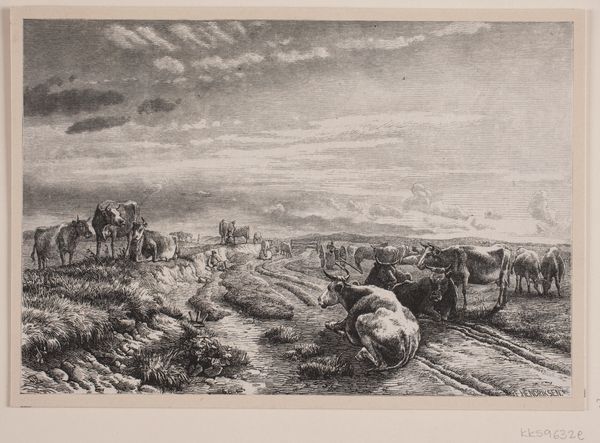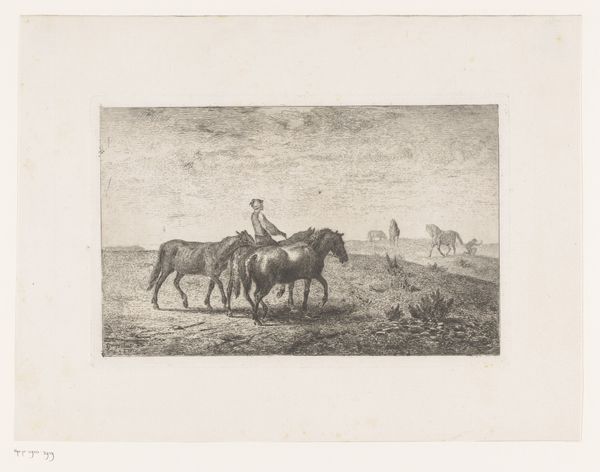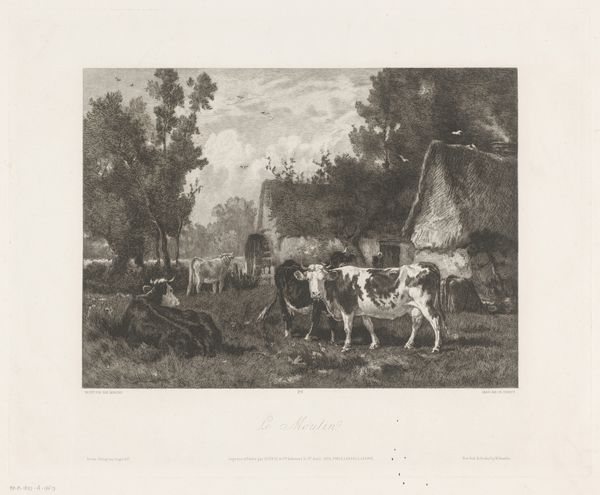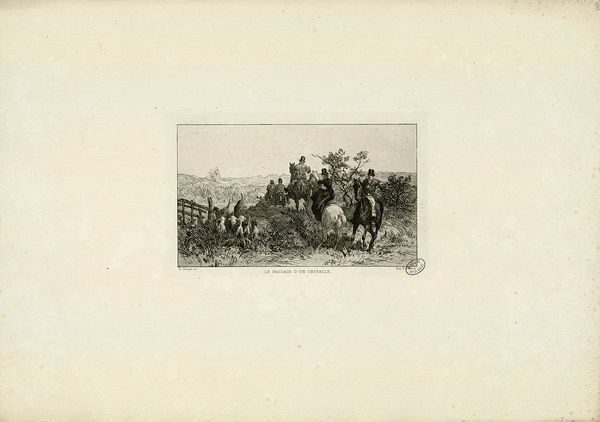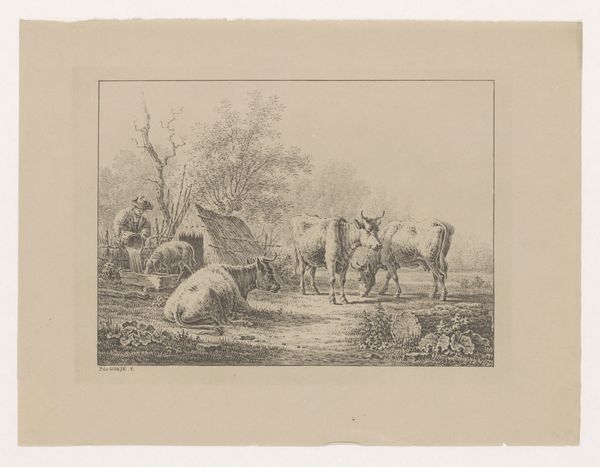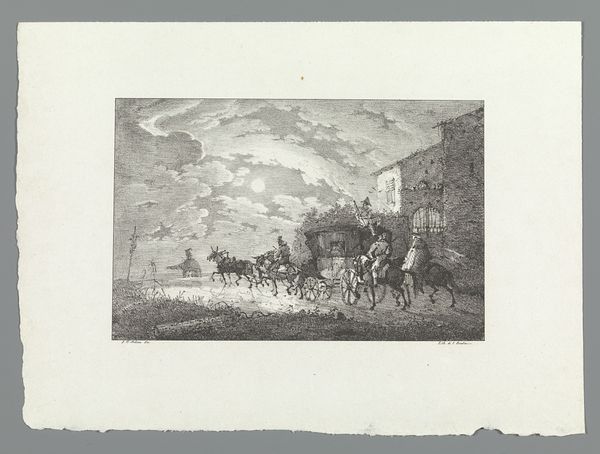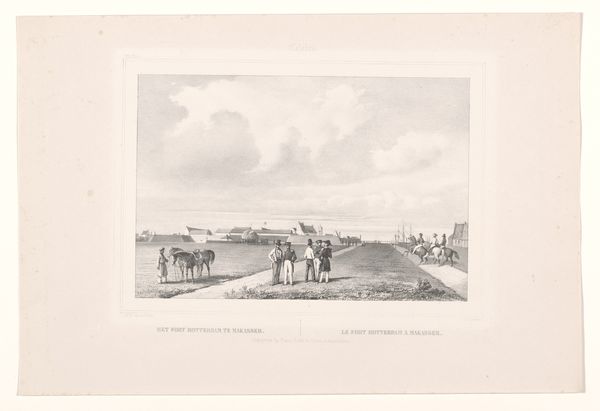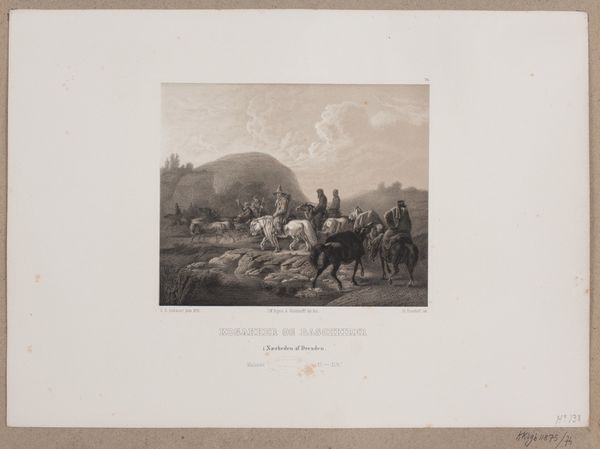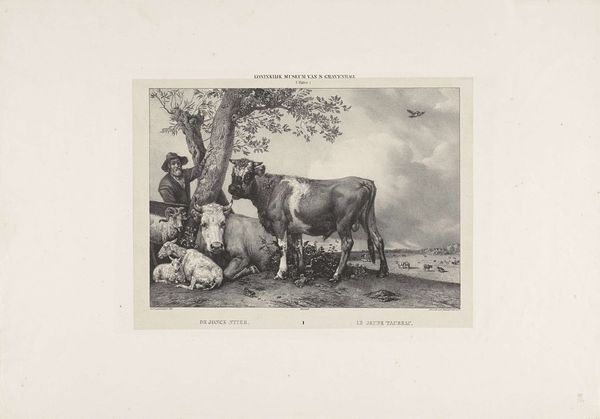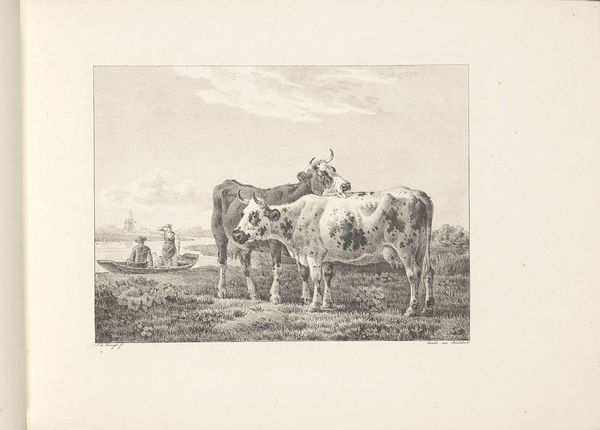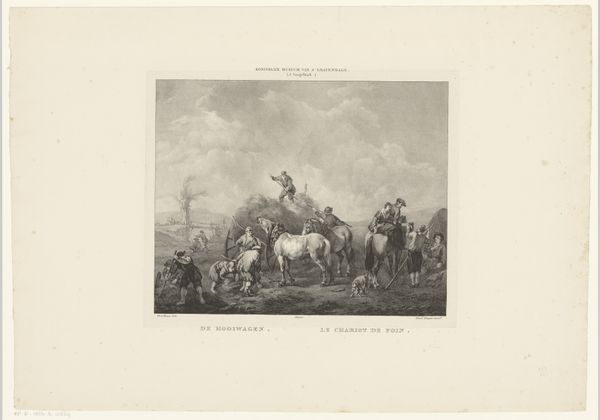
print, engraving
#
16_19th-century
# print
#
landscape
#
genre-painting
#
graphite
#
engraving
#
realism
Dimensions: height 190 mm, width 240 mm
Copyright: Rijks Museum: Open Domain
Curator: Ah, here we have "Eerste dijkschouw in Drechterland, 1288," a work by Christiaan Lodewijk van Kesteren created sometime between 1865 and 1870. It's currently housed here at the Rijksmuseum. It appears to be a print, an engraving actually, depicting a scene from long ago. Editor: It's remarkably... somber. All those greys pull you into a place of toil and perhaps a little bit of foreboding. The diagonal composition really emphasizes that downward pull. Curator: Van Kesteren worked in the realist style and I think he wonderfully represents both landscape and genre painting. The labor seems heavy, and the presence of figures on horseback reminds us of a stratified society. We have those who work the land and those who...oversee. Editor: It’s such an interesting choice to focus on this inaugural event—the first official inspection of the dikes. Makes you wonder what was at stake, and for whom. What narratives were being intentionally excluded or glossed over, by whom and in whose favor? It begs questions of power, ownership, and social contract, no? Curator: Absolutely! And the artist manages to convey both the scale of the work—those long flatlands, the imposing sky—as well as the immediacy of daily life. The details, like the figures observing, create such a strong sense of history being witnessed. A slice of life being codified and recorded. The inclusion of a random small dog certainly offers a slice of everyday, does it not? Editor: Right, there’s this really interesting tension between the groundedness of those in the field versus the figures on horseback, looming above. And consider the act of inspection itself. These kinds of administrative processes reinforce dominant power dynamics that marginalize certain groups of people—even as those very processes purport to offer protection to everyone. It is what it is: pure social theatre and perhaps not so pure intention. Curator: It really captures a moment laden with those tensions—between man and nature, between the classes, between past and present. Van Kesteren invites us to ponder the foundation upon which society is built...or perhaps better stated: engineered. Editor: Precisely. Thinking about it, art's role is to constantly unearth those historical narratives that haunt us and illuminate pathways toward more just futures. Food for thought—and, to say the least, water tight, so to speak!
Comments
No comments
Be the first to comment and join the conversation on the ultimate creative platform.

